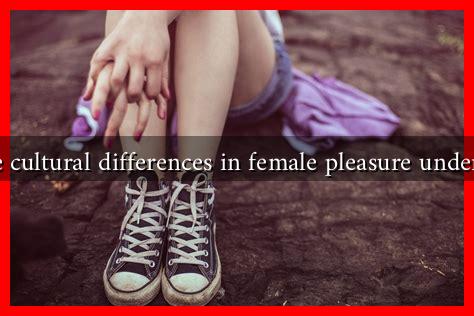-
Table of Contents
Are There Cultural Differences in Female Pleasure Understanding?
Understanding female pleasure is a complex topic that varies significantly across different cultures. The perception of female pleasure is influenced by a myriad of factors, including societal norms, religious beliefs, and historical contexts. This article delves into the cultural differences in understanding female pleasure, exploring how these differences manifest in various societies and their implications for women’s health and empowerment.
The Cultural Context of Female Pleasure
Female pleasure is often viewed through the lens of cultural narratives that shape women’s experiences and expressions of sexuality. In many cultures, female pleasure is either celebrated or stigmatized, leading to vastly different understandings and experiences. Here are some key cultural contexts:
- Western Cultures: In many Western societies, there has been a gradual shift towards embracing female pleasure, particularly since the sexual revolution of the 1960s. However, this acceptance is often juxtaposed with lingering stigmas and unrealistic portrayals of female sexuality in media.
- Eastern Cultures: In several Eastern cultures, traditional views often prioritize male pleasure, leading to a lack of open discussion about female sexual needs. In some cases, cultural taboos surrounding female sexuality can result in misinformation and shame.
- Indigenous Cultures: Many indigenous cultures have a more holistic view of sexuality, often integrating it into spiritual practices. For instance, some Native American tribes celebrate female sexuality as a source of power and connection to the earth.
Case Studies: Female Pleasure Across Cultures
To illustrate the cultural differences in understanding female pleasure, we can examine specific case studies from various regions:
- Japan: In Japan, the concept of “shunga” (erotic art) has historical roots that celebrate female pleasure. However, contemporary society often grapples with a duality where traditional views clash with modern sexual liberation movements.
- Middle East: In many Middle Eastern countries, cultural and religious beliefs heavily influence perceptions of female pleasure. Women often face restrictions that limit their sexual autonomy, leading to a lack of understanding and communication about their needs.
- Scandinavia: Scandinavian countries are often cited as leaders in gender equality, and this extends to discussions about female pleasure. Comprehensive sex education and open dialogues about sexuality contribute to a more informed understanding of female pleasure.
Statistics and Research Findings
Research indicates that cultural attitudes significantly impact women’s sexual health and satisfaction. A study published in the journal Journal of Sex Research found that:
- Women in cultures with open discussions about sexuality reported higher levels of sexual satisfaction.
- In cultures where female pleasure is stigmatized, women are more likely to experience sexual dysfunction.
- Access to sexual education correlates with a better understanding of female anatomy and pleasure, leading to improved sexual experiences.
The Role of Education and Empowerment
Education plays a crucial role in shaping the understanding of female pleasure. Comprehensive sex education that includes discussions about female anatomy, consent, and pleasure can empower women to advocate for their needs. Here are some strategies for promoting a better understanding of female pleasure:
- Inclusive Sex Education: Implementing sex education programs that address female pleasure can help dismantle harmful myths and promote healthy sexual relationships.
- Open Dialogue: Encouraging open conversations about sexuality within families and communities can foster a more supportive environment for women to express their needs.
- Access to Resources: Providing access to literature, workshops, and counseling can help women better understand their bodies and desires.
Conclusion
The understanding of female pleasure is deeply rooted in cultural contexts that shape women’s experiences and expressions of sexuality. While some cultures celebrate female pleasure, others impose restrictions that hinder women’s sexual autonomy. By promoting education, open dialogue, and access to resources, we can work towards a more inclusive understanding of female pleasure that empowers women across the globe. Recognizing and respecting cultural differences is essential in fostering a world where female pleasure is understood, celebrated, and prioritized.

